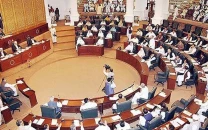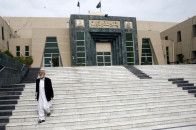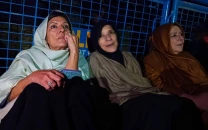YouTube case in court: Petitioner told to seek clarification on SC order
Proceedings adjourned until clarification on the order leading to the website ban.

The petitioner’s counsel insisted that the bench take a decision on the petition. CREATIVE COMMONS
A division bench of the Lahore High Court on Tuesday directed Bytes for All, an organisation working against internet censorship, to approach the Supreme Court for clarification of its order that had led to the Ministry of Information blocking access to video-hosting website YouTube.
The court adjourned the hearing until a clarification on the SC orders was received. The high court issued the order after 16 months of proceedings on a Bytes for All petition.
The bench, headed by Justice Mansoor Ali Shah, issued the order after the federal government said that the ban had been imposed on the Supreme Court’s order. Bytes for All’s counsel said that the SC had only directed the Ministry of Information to block a controversial video on YouTube but the ministry had blocked the whole website. The deputy attorney general stated that there was no mechanism available to block the controversial video alone. After hearing arguments from both sides, the bench ordered the petitioner to move the SC for a clarification of its order under which the website had been blocked.
The petitioner’s counsel insisted that the bench take a decision on the petition. Justice Shah responded that many people in Pakistan were frustrated over the YouTube ban, but the SC order made it impossible to issue any decision in the case.
Salman Akhtar, a technical expert appointed by the court, submitted a report, which recommended that YouTube access be restored with warning pages that inform the user if they request objectionable content. Due to the impossibility of creating a comprehensive list of all objectionable material, these warning pages would only cover links flagged by the Ministry of Information Technology and the Pakistan Telecom Authority (PTA) and appropriately marked by Google. There thus remained the possibility of online material that had not been flagged, which would not have the warning page. Akhtar said YouTube ran in two modes: http (open) and https (encrypted). In the open mode, he said, the PTA could easily block specific instances of the video. In the encrypted mode, however, the video could not be blocked as it could not be detected by an intermediary such as the PTA.
Akhtar said that due to the nature of YouTube and the internet in general, the government had two choices. “The first solution is a draconian one: to bar all access to YouTube. The second solution is to attempt to limit access but recognise that complete suppression cannot be achieved. It is important to weigh the social benefits of open access to the internet in general and YouTube in particular,” he said
“In our opinion, the only viable choice is the second one. We can only make the best effort possible to prohibit viewing the video concerned. We also strongly reiterate support for the democratic principle of allowing citizens access to the internet in both open and encrypted modes.”
The court adjourned the hearing of the case until a clarification of the SC orders was received. The petitioner had submitted that any filtering and blocking of the internet was counter-productive and predatory. The petitioner sought the court’s orders for the Ministry of Information Technology as well as the PTA to unblock YouTube. The website was blocked by the government on September 17, 2012, following complaints about a controversial video on the website.
Published in The Express Tribune, May 14th, 2014.



















COMMENTS
Comments are moderated and generally will be posted if they are on-topic and not abusive.
For more information, please see our Comments FAQ